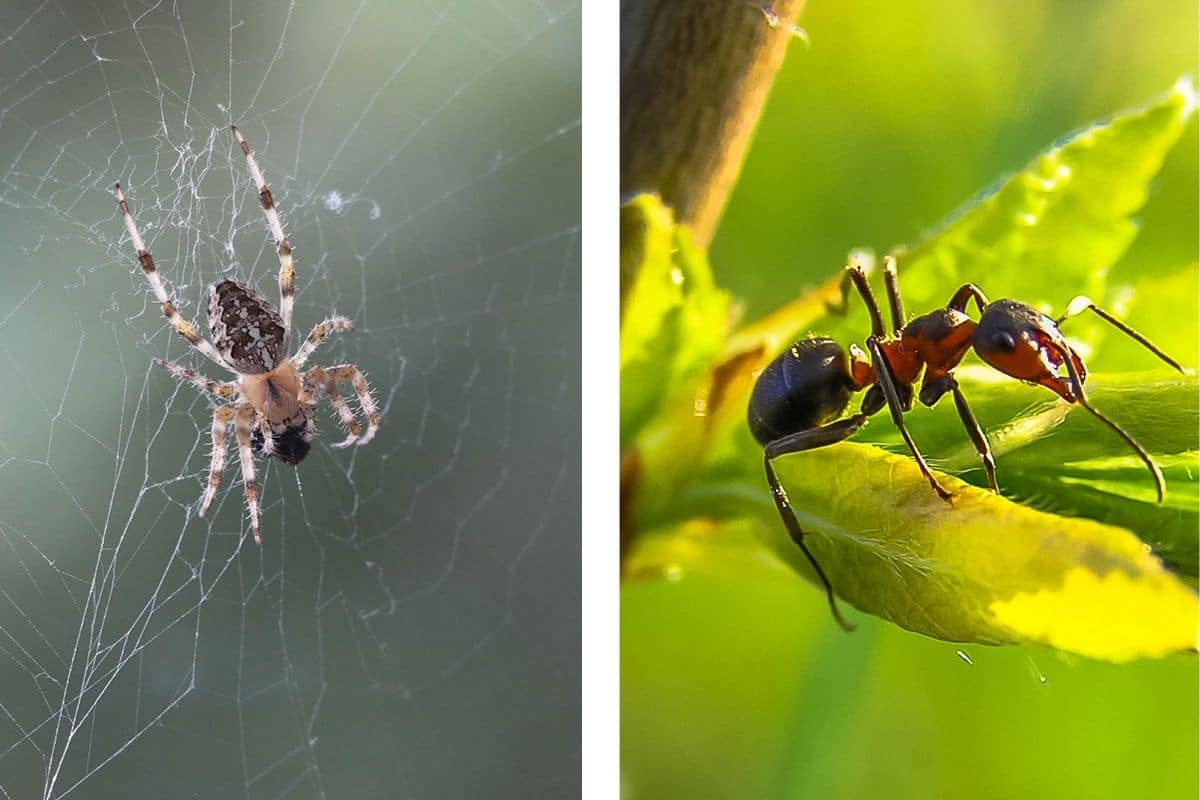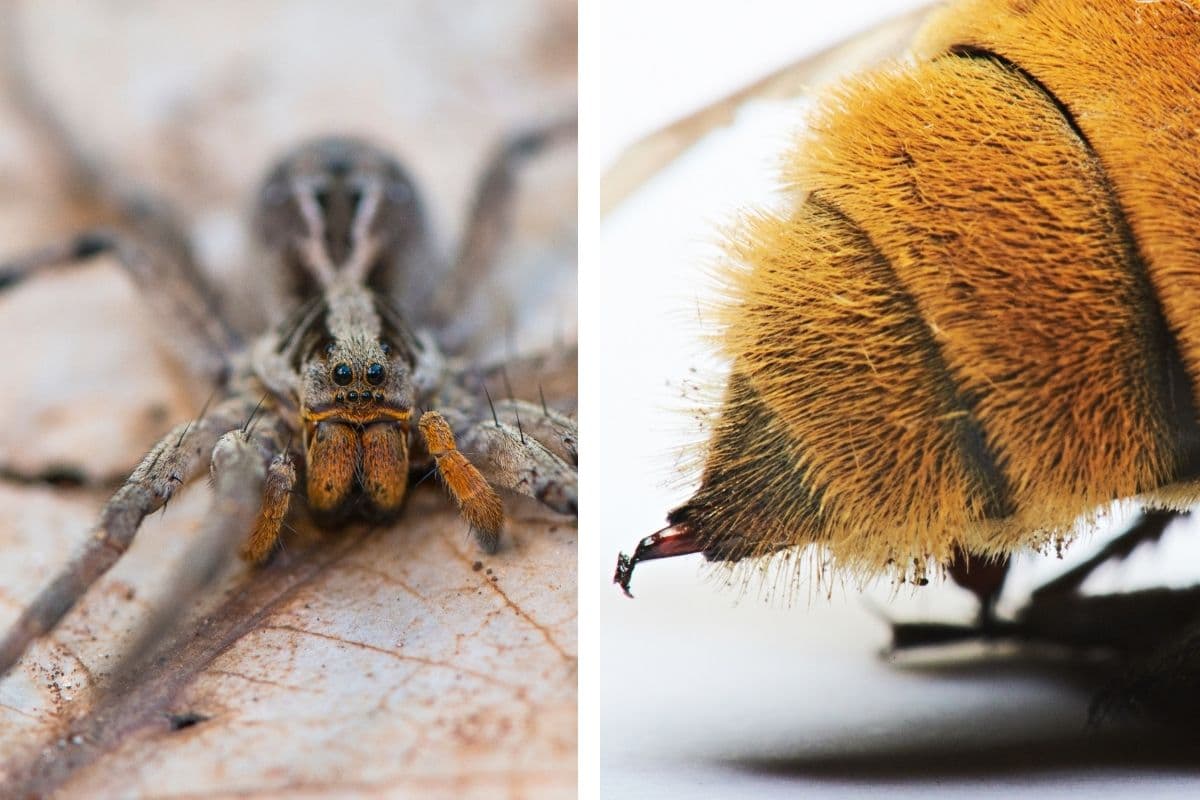Spiders are often mistaken for insects. Why this is not so, where the differences lie, especially in appearance, and to which two classes arachnids and insects belong, you will learn here.
Classification
Although spiders and insects belong to the stem group of arthropods (Arthropoda), they have an independent classification: arachnids (Arachnida) and insects (Insecta). Of particular importance for this is the different appearance of different anatomical body parts.

Anatomy
The clearest distinguishing features between insect and spider species lie in their body structure and certain details of their appearance, respectively – which ultimately make them two distinct groups of animals.
Limbs:
Insects belong to the subphylum of hexapods (Hexapoda) and accordingly possess only six legs, while the spider usually shows eight legs. Moreover, the legs of the latter consist of seven limbs – insect legs have only five limbs per limb. Arachnids are also wingless and do not display antennae. Other characteristics arachnids can bring with them:
usually much longer legs
both front legs more flexible, because they function similar to insect antennae
partly good jumping ability
Physique:
The spider body is composed of two body sections: the anterior and posterior body sections. An insect, on the other hand, always has three body sections, with the thoracic area clearly visible in addition to the front and rear sections.
Eyes:
A close look at the eye area reveals some differences between spiders and insects:
eight single eyes in arachnids – small reticulated/facetted eyes in insects.
spider with main and secondary eyes – insectas only main eyes
better visual quality in spider, because separate image and motion detection (therefore usually faster escape reaction)
Note: Did you know that there is also a spider without eyes? This is the giant crab spider (Sparassidae), which was first discovered in 2012. However, the chance of encountering this one in Europe is very slim, as it is so far only native to Laos, where it lives in complete darkness in caves.
Spider nipples
Completely lacking in any insect is the ability to produce silk threads/spider webs. These are produced by arachnids through the so-called spinnerets, which are located on their hindquarters. With these they catch their prey in a completely different way than insects. First and foremost, arachnids target the insect for their feeding. They also use the spinnerets to construct the cocoons for their offspring.
Venom
While the insect uses a sting to secrete venom when attacked or to defend itself, this function is performed by the so-called chelicerae in the spider. They are also called “jaw feelers” because they are located in the mouth. These are movable claw tools with which they can bite at their prey and at the same time inject venom into it. Those who keep venomous spiders in their homes usually purchase specimens with the venom glands removed. The claws are vital, because they use them to “snatch” their food.

Note: Well over 80,000 different Arachnida species are known worldwide. However, more detailed information based on research is only available on about 41,000 species.
Contents
Frequently asked questions
Can spiders be controlled with insecticides?
If you mean chemical insecticides, they are usually effective against spiders. However, you should not use them for environmental reasons and for the sake of your health. There are some home remedies that help against both arthropod species. The best are to use scents that drive them away. For example, a mixture of vinegar and water for spraying is a good way to do this.
Are spiders as important to the ecosystem as insects?
Yes, because arachnids contribute enormously to maintaining the natural balance. They are also considered ideal predators of numerous insect pests, such as aphids.
Do arachnids overwinter like most insect species?
As with insects, there are species of spiders that overwinter differently. Some are winter active and others go into cold torpor in protected winter quarters.

